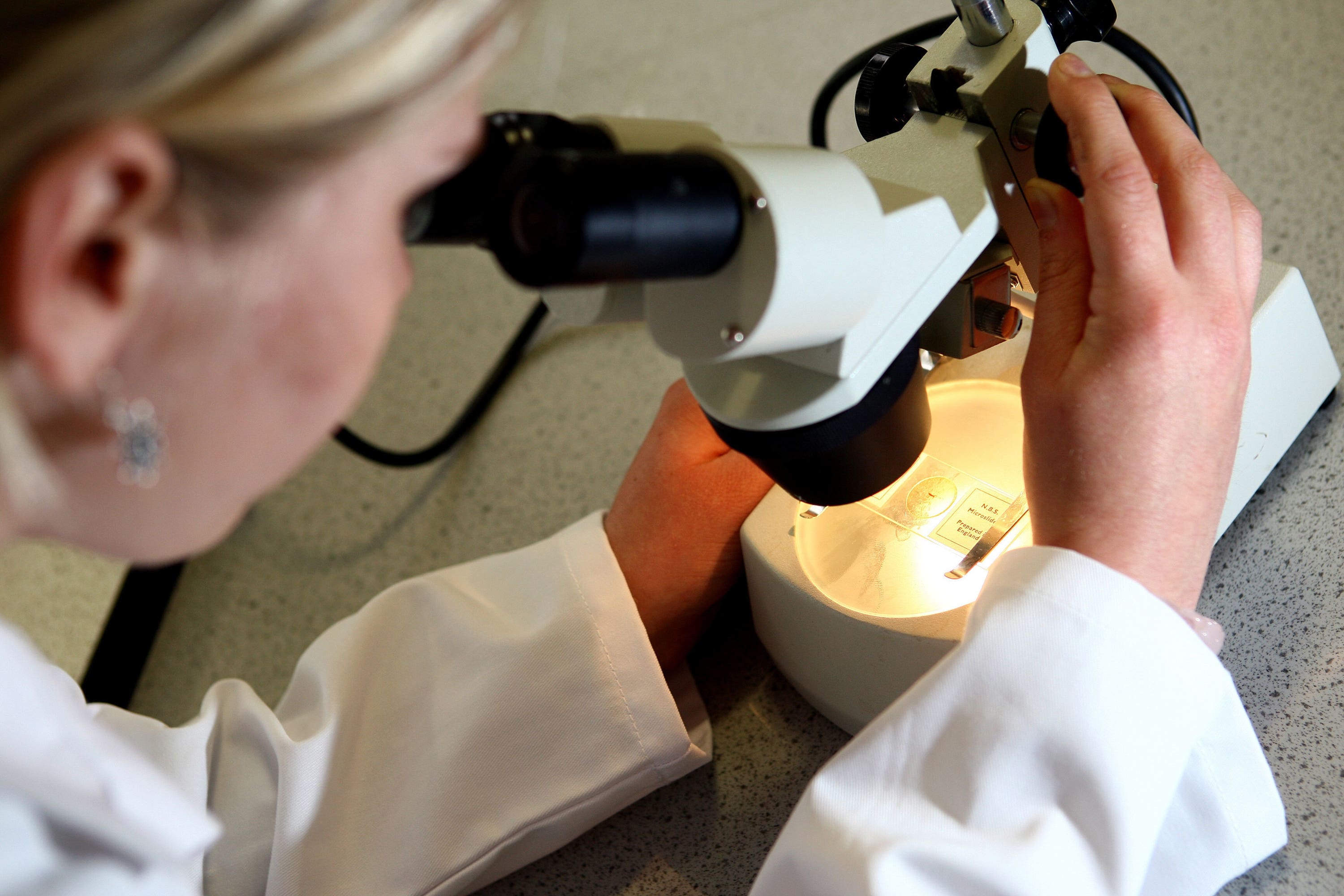HIV drug may help protect against build-up of dementia-related proteins – study
A common characteristic of diseases such as Huntington’s disease and various forms of dementia is the build-up in the brain of proteins.

An existing HIV drug has been found to protect against the dangerous build-up of proteins in dementia, according to early-stage research.
Research by University of Cambridge scientists indicates how the brain’s ability to clear out toxic proteins is impaired in Huntington’s disease and other forms of dementia.
In the new study, conducted in mice, a repurposed HIV drug, called Maraviroc, was able to restore this function, helping prevent this dangerous build-up and slowing progression of the disease.
We’re very excited about these findings because we’ve not just found a new mechanism of how our microglia hasten neurodegeneration, we’ve also shown this can be interrupted, potentially even with an existing, safe treatment
Professor David Rubinsztein, from the UK Dementia Research Institute at the University of Cambridge, the study’s senior author, said: “We’re very excited about these findings because we’ve not just found a new mechanism of how our microglia hasten neurodegeneration, we’ve also shown this can be interrupted, potentially even with an existing, safe treatment.
“Maraviroc may not itself turn out to be the magic bullet, but it shows a possible way forward.
“During the development of this drug as a HIV treatment, there were a number of other candidates that failed along the way because they were not effective against HIV.
“We may find that one of these works effectively in humans to prevent neurodegenerative diseases.”
A common characteristic of neurodegenerative diseases such as Huntington’s disease and various forms of dementia is the build-up in the brain of clusters – known as aggregates – of misfolded proteins, such as huntingtin and tau.
These aggregates lead to the degradation and eventual death of brain cells and the onset of symptoms.
One of the ways the body rids itself of toxic materials is autophagy, or “self-eating”.
This is a process whereby cells “eat” the unwanted material, break it down and discard it.
However, this mechanism does not work properly in neurodegenerative diseases, meaning the body is no longer able to get rid of the misfolded proteins.
Dr Rosa Sancho, from Alzheimer’s Research UK, the main funder of the research, said: “Over a million people in the UK are living with a neurodegenerative disease.
“Drugs that could protect the brain’s natural ability to keep itself healthy would have huge potential for limiting the number of people whose lives are devastated by conditions like dementia.
“This sort of promising, early-stage research is a vital building block towards future treatments, which depend on innovative approaches like this emerging from labs.”
In the study published in Neuron, the researchers carried out their research using mice that had been genetically-altered to develop forms of Huntington’s disease, or a type of dementia characterised by the build-up of the tau protein.
The brain and central nervous system have their own specialist immune cells, known as microglia, which should protect against unwanted and toxic materials.
The study in mice showed that in neurodegenerative diseases, microglia release molecules which activate a switch – called CCR5 – on the surface of cells.
When activated, this switch impairs the ability of the brain to rid itself of the toxic proteins.
These proteins then build up and begin to cause irreversible damage to the brain.
When the researchers used mice bred to knock out the action of CCR5, they found the animals were protected against the build-up of misfolded huntingtin and tau.
Researchers say this discovery offers clues as to how this build-up could in future be slowed or prevented in humans.
The CCR5 switch is also used by HIV as a doorway into our cells, scientists say.
The team used maraviroc to treat the Huntington’s disease mice, administering the drug for four weeks when the mice were two months old.
When the brains of the mice were analysed, the researchers found a significant reduction in the number of huntingtin aggregates when compared to untreated mice.
However, as Huntington’s disease only manifests in mice as mild symptoms by 12 weeks even without treatment, it was too early to see whether the drug would make an impact on the mice’s symptoms.
The same effect was observed in the dementia mice.
In these mice, not only did the drug reduce the amount of tau aggregates compared to untreated mice, but it also slowed down the loss of brain cells, the study found.
According to the scientists, the treated mice performed better than untreated mice at an object recognition test, suggesting that the drug slowed down memory loss.
Bookmark popover
Removed from bookmarks